Stephen McGarry redefines architecture as an emotive and contextual artform, blending storytelling, material sensitivity, and cultural memory in his shortlisted Bruce Street project.

May 6th, 2025
Welcome to SpeakingOut!, the exclusive interview series hosted by Jan Henderson for the 2025 INDE.Awards. This series shines a light on some of the most thoughtful and creative voices in architecture and design, including past winners, jury members, those shortlisted and category luminaries. This episode is proudly supported by Karndean, our partner in The Building category.
In this installment, we speak with Stephen McGarry, Director at Carr. Based in Melbourne, Stephen has not only played a pivotal role in Carr’s rural Victorian projects but also contributed to works across Ireland, the UK, and Southeast Asia. His recent project, Bruce Street, was shortlisted in the 2024 INDE.Awards in The Building category – and for good reason.

Emotional Architecture
Stephen’s architectural vision is grounded in empathy, storytelling, and cultural context. He believes that architecture should be more than functional – it should shape how people feel, connect, and heal within their environments. His global perspective, drawn from delivering projects in varied social and urban contexts, enriches his ability to approach design as a form of placemaking.
McGarry spoke about the importance of materiality and emotional resonance in his work. For him, good design doesn’t just respond to a site’s physical context – it weaves in layers of social meaning. “Buildings aren’t just structures,” he says. “They can be symbols of division, resilience, loss, and eventually, regeneration.”
A Belfast Childhood Inspired a Lifelong Passion
Stephen’s journey into architecture is rooted in both artistic instinct and personal experience. Growing up in Belfast during a time of significant political unrest, he saw firsthand how buildings could mirror the scars and strengths of a city. These early experiences shaped his desire to pursue architecture not just as a profession, but as a way to engage with and reimagine the world.
“From a very early age, I knew I wanted to be an architect,” he shares. “I’ve always been drawn to shaping the world – physically, socially, emotionally. In Belfast, I saw spaces destroyed, raised, left behind – and slowly, through peace, rebuilt. That’s when I realised the power of architecture in healing and hope.”
Behind the Bruce Street Project
The Bruce Street project, located in Kensington, Melbourne, represents a turning point in the precinct’s built fabric. Situated on a 13-square-metre site, the project had to contend with a context of low-rise warehouses and an adjacent heritage precinct known as the Younghusband site, which is currently being revitalised.

Taking cues from this setting, Carr’s design reflects a tactile, historical materiality while offering something distinctly new. The building, a commercial development, includes best-in-class end-of-trip facilities (EOT), strong street activation, and a sensitivity to scale as it becomes the first of its kind in the Kensington Industrial Park.
“It was the first building of its scale in that pocket, which brought challenges,” says McGarry. “But we leaned into the context – both in material choices and in form – to create something that felt both familiar and forward-looking.”
Designing for Resilience and Regeneration
McGarry’s work demonstrates a commitment to emotionally intelligent architecture – the kind that doesn’t just serve a function but contributes to community wellbeing and cultural continuity. In his view, architects have a responsibility not just to design spaces, but to listen and respond to the stories those spaces hold.

His influence within Carr, especially in shaping the practice’s rural and urban blend of projects, speaks to a growing shift in Australian architecture: one that places as much emphasis on emotional and cultural resonance as it does on environmental and urban strategy.
We extend a warm thank you to Stephen McGarry for sharing his journey, philosophy, and vision with us in this episode of SpeakingOut! His thoughtful reflections remind us that great architecture goes beyond form and function – it connects, transforms, and endures.
Special thanks to our partner Karndean for supporting The Building category at the 2025 INDE.Awards.
Entries to the 2025 INDE.Awards are now closed. Stay tuned for this year’s shortlist announcement on the 12th June 2025.
INDESIGN is on instagram
Follow @indesignlive
A searchable and comprehensive guide for specifying leading products and their suppliers
Keep up to date with the latest and greatest from our industry BFF's!

Merging two hotel identities in one landmark development, Hotel Indigo and Holiday Inn Little Collins capture the spirit of Melbourne through Buchan’s narrative-driven design – elevated by GROHE’s signature craftsmanship.

London-based design duo Raw Edges have joined forces with Established & Sons and Tongue & Groove to introduce Wall to Wall – a hand-stained, “living collection” that transforms parquet flooring into a canvas of colour, pattern, and possibility.
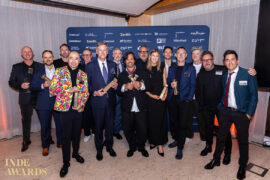
With the opening of the 2026 INDE.Awards program, now is the time to assess your projects, ensure photography is at hand and begin your submissions.
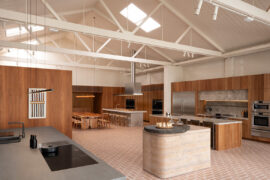
The Fisher and Paykel Melbourne Experience Centre by Clare Cousins Architects with Fisher and Paykel Design and Alt Group has been awarded The Retail Space at the INDE.Awards 2025. As a winning project, it redefines the possibilities of retail architecture by creating an immersive, material rich environment shaped by place, culture and craft.

Across four decades, Leone Lorrimer LFRAIA GAICD reshaped Australian architecture through strategic vision, global influence and fearless leadership.
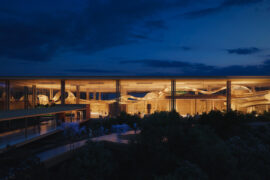
Recognised as winners at the INDE.Awards 2025, Enter Projects Asia in collaboration with SOM have received The Influencer award. Their work on Terminal 2 Kempegowda International Airport Interiors redefines the aesthetics of airport design through a monumental expression of biophilia, sustainability and craftsmanship.
The internet never sleeps! Here's the stuff you might have missed
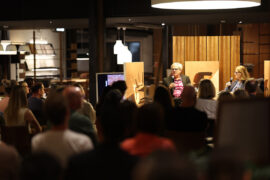
He’s the Director of Eames Office and an all-round creative polymath – and Eames Demetrios has just been in our region with Living Edge.
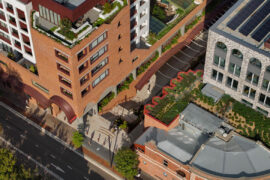
Seven years in the making, the new Surry Hills Village is here with doors open and crowds gathering.
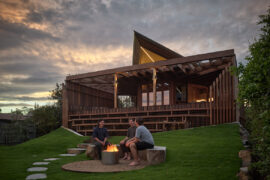
Recognised as a winner at the INDE.Awards 2025, Barton Taylor has received The Photographer – Residential accolade. His photographic work on Cake House captures the soul of a coastal icon reimagined, blending light, texture and atmosphere into a compelling visual narrative.

Hiwa, the University of Auckland’s six-storey recreation centre by Warren and Mahoney with MJMA Toronto and Haumi, has taken out Sport Architecture at the 2025 World Architecture Festival. A vertical village for wellbeing and connection, the project continues its run of global accolades as a new benchmark for campus life and student experience.